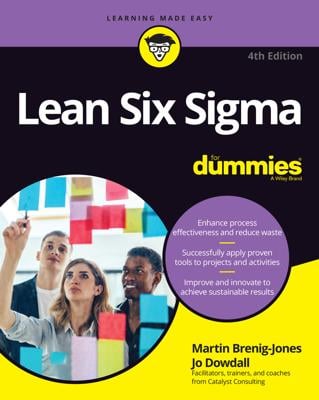Born at Toyota, Lean is a lighter, leaner business strategy to achieve wanted results. A Lean process for business efficiency is ruthless about getting rid of not just errors, but also steps, processes, and people that don’t ultimately add value to your end product or service.
Less structured and mathematical than Six Sigma, but with a similar focus on customer needs and reducing defects, Lean is all about getting as close as possible to a waste-free process that results in maximum customer value.
Lean in a nutshell
The key differentiations of Lean include the following:
Focus on the customer: Lean is almost religious about listening to the voice of the customer, or VOC. If a step doesn’t add value to the end product from the customer’s point of view, Lean strips it out.
Weeding out waste: There are seven types of waste, or muda, in Lean, and much attention is paid to eliminating them.
Just-in-time attitude: In Lean, it’s a waste to produce anything in anticipation of customers’ desires. Instead, you produce only when you have orders in hand.
Visual representations: As opposed to the mathematical approach of Six Sigma, Lean uses value-stream maps to visually draw out processes. While a right-brained, list-oriented person can construct a value-stream map with basic text, it’s also possible to draw beautiful value-stream maps if they help to communicate better.
The seven wastes of Lean
There are seven kinds of waste that Lean focuses on eliminating: transport, waiting, overproduction, defects, inventory, motion, and extra processing.
Lean is best for incremental improvements, organizations that focus on their people and culture, and companies that want a less mathematical and more flexible approach than Six Sigma.
There’s also a blended methodology known as Lean Six Sigma, though it is not necessarily a perfect marriage of the two processes. In fact, many professionals argue that by trying to use both simultaneously, you lose the best of both.
This is probably true if you are using a strict Six Sigma or Lean approach, but if you are like many organizations and only using a portion of one or the other, then it can be beneficial to see what the other has to offer. For example, you can strive for a breakthrough Six Sigma improvement by eliminating waste Lean-style.

